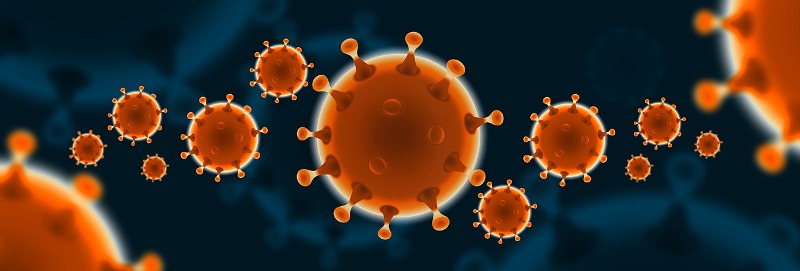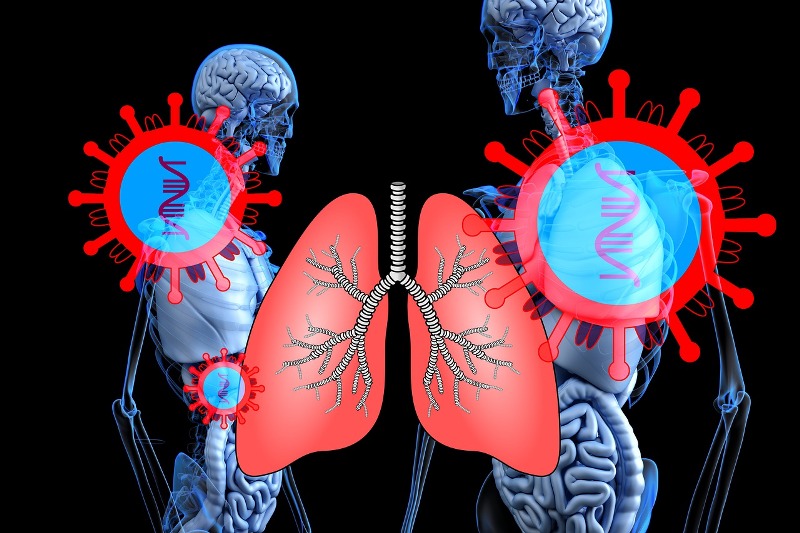A diagnostic test for the COVID-19 coronavirus is performed in case of suspicion of the disease validated by the Emergency Medical Services (EMS) and a referent infectiologist. This test concerns any person who is presenting signs of acute respiratory distress for which no etiology could be identified and fragile persons showing symptoms evocative of COVID-19, at risk of developing complications.
Good to know: recently, pharmacies have been authorized to perform Rapid Diagnostic Tests (RDT) for Covid infection.
Antigenic testing
In addition, other rapid diagnostic tests for Sars-CoV-2 (RDT) or rapid diagnostic tests (RDT) are officially authorized. They can be used:
– in the context of screening operations in the general population (as a first or second line, if nasopharyngeal sampling is not possible);
– for symptomatic patients, up to 4 days after the onset of symptoms, as a second-line test when nasopharyngeal swabbing is difficult or impossible;
– as a second-line test (they should be done as soon as possible and then at 7 days for people in the same household, or 7 days after exposure.
These antigenic tests identify virus proteins in 15 to 20 minutes.
Recommended for people over 15 years of age, these RDTs are also authorized in the form of self-tests as an alternative to antigenic RDT tests on nasopharyngeal swabs. The sample must be taken in a “deep nasal” manner (3 to 4 cm, 5 rotations of the swab), with the antigenic test performed immediately afterward. These tests can be used in the private sphere, for example, before a meeting with relatives. Ideally, the test should be performed on the same day or the day before the visit.
If the test is positive, it must be confirmed by an RT-PCR test (nasopharyngeal or salivary), which will also make it possible to characterize the variant present.
Salivary RT-PCR tests
The turnaround time for a salivary RT-PCR test is the same as for a nasopharyngeal RT-PCR test. Its main advantage is its better acceptability.
Good to know: saliva sampling (which can be done directly in the laboratory or at home in a tube provided in a sampling kit) must not be done within 30 minutes after drinking, eating, or smoking, and the sample must be kept in a dry, sterile bottle at room temperature and given to a laboratory as soon as possible (within 5 hours).
People who have symptoms suggestive of coronavirus infection should stay at home, avoid contact, call a doctor before going to the office, or call the health care hotline in their area. Only if symptoms worsen (fever, cough, fatigue, loss of taste or smell, diarrhea, malaise, etc.) and breathing difficulties and signs of choking appear should the EMS be contacted.
Symptoms

It takes an average of one week from the onset of the first symptoms to admission to the hospital in the state phase of the disease.
At this stage, symptoms include fever, cough, chest pain, respiratory distress, and a chest CT scan almost always showing pneumonia in both lungs. But more than a chest CT scan, it is an angioscopy that should be performed if pulmonary complications are suspected. Indeed, angioscopy allows the detection of microemboli found in 23% of patients with COVID-19 and respiratory difficulties.
If you are diagnosed with the virus, you must stay home and take an initial 7 to 14 days off work. You will have a medical check-up between the 6th and 8th day at a distance to monitor your symptoms. Depending on your condition, your work stoppage may be renewed for an additional 7 days. The isolation will be lifted 48 hours after the complete resolution of symptoms.


